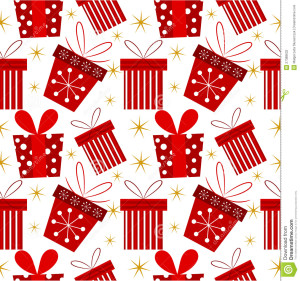 For a long while it seemed that the Flash hegemony is unbeatable in the market of online games. Then Apple announced that their (then) new mobile device – the iPhone – won’t support Flash because of performance issues. This forced game developers to find new alternatives rapidly.
For a long while it seemed that the Flash hegemony is unbeatable in the market of online games. Then Apple announced that their (then) new mobile device – the iPhone – won’t support Flash because of performance issues. This forced game developers to find new alternatives rapidly.
For application developers,there is an ongoing argument when it comes to which is the best language to use for game development. On one hand, they need a simple environment that lets them use their imagination and creativity for executing their ideas instead of having to focus on function libraries and code classes. On the other hand, the final application must run fast and smooth to provide the best user experience and must work on all the major platforms.
Ruby achieves a great balance between performance and simplicity with easy coding features. Let us examine some of its main features and see if it can be used to build web based games.
A comprehensive library pack called RubyMotion with great features and tools has been published to extend Ruby for iOS, so you can now easily use the dynamic Ruby language for developing iPhone or iPad games.
There is a downside though. When it comes to performance there are definitely better languages. In order to get the same performance level as you would in C++, for example, you need to be very creative and put in a lot of time when it comes to Ruby. But thanks to its dynamic nature and the option to compile to Ruby code to flash or iOS apps, Ruby gives developers a lot of flexibility which allows a creative and experienced developer to manage just fine with its language limitations.
Another important question to examine is whether the necessary technology exists to build games. Is there enough support for components such as graphics, audio playback and user interaction? Ruby has all that and more. Since it is an open source language, it keeps evolving and changing. Just about any obstacle is handled by thousands of programmers that turn it into a challenge and often share their findings with the Entire Ruby community. There are also packages to give OpenGL support in a fast and accelerated way. You can find solutions for 3D games with G3Druby or the powerful Gosu library for 2D games development.
The ultimate gem in all this is the Rubygame, which offers an independent multimedia library platform that provides all game features in a simple and effective way for Ruby programmers (In case you want to run Rubygame on Windows, I suggest you to download and set-up dependencies from the Man With Code Rubygame Setup tutorial, where you can find some simple videos about the whole set-up process as well).
When our great new game is ready, the next question is how we can reach millions of users with it and how we can present our vision on their computer. Luckily we have out-of-the-box solutions to do it. For example, iOS is supported via the previously mentioned RubyMotion.
But you don’t need to worry if you prefer good old Flash.
There’s an open source compiler, called ‘Ruby On Flash’ that compiles your Ruby code into an .swf file., This gives you the option to move the game development process to the programmer friendly environment.
Being a developer working in the gaming industry, let me demonstrate the ease of Ruby (using Gosu) with a simple “scratch-off” script, that operates similarly to the well-known cardboard scratch-cards, where an image or symbol is hidden under the coating. In the online version the mouse is taking the part of the coin, scratching over the coating and uncovering the icons. Here, I simply
Here’s how it looks:
[gist id=”4245320″]
You can see that Ruby’s syntax allows for clear intention of code while performing some relatively complex graphical functions.
If you have any experience developing games with Ruby, please tell us about it in the comments. Thanks for reading!
Frequently Asked Questions about Ruby for Game Development
What makes Ruby a suitable language for game development?
Ruby is a high-level, interpreted programming language that is known for its simplicity and readability. It has a clean syntax that makes it easy for beginners to learn and use. Ruby also has a rich set of libraries and frameworks, such as Gosu and Rubygame, which provide functionalities for creating 2D games. Moreover, Ruby’s object-oriented nature allows for better organization and reusability of code, which can be beneficial in game development.
Can Ruby handle the performance requirements of game development?
While Ruby may not be as fast as lower-level languages like C++, it is still capable of handling the performance requirements of many types of games. The performance of a game developed in Ruby largely depends on the efficiency of the code and the capabilities of the game engine used. For complex, high-performance games, developers may need to use Ruby in conjunction with other languages or tools.
What are some game development libraries and frameworks available for Ruby?
There are several libraries and frameworks available for game development in Ruby. Gosu is a popular 2D game development library that provides functionalities for graphics, audio, and input. Rubygame is another library that offers game-related functionalities. Chingu is a framework built on top of Gosu that simplifies game development. Other options include Ray and Gamebox.
How does Ruby compare to other languages for game development?
Compared to other languages, Ruby is known for its simplicity and readability, which can make the development process smoother and faster. However, it may not be as fast or powerful as languages like C++ or Java. Ruby is a great choice for beginners and for developing simpler games, but for more complex, high-performance games, other languages may be more suitable.
Can I develop mobile games with Ruby?
Yes, it is possible to develop mobile games with Ruby. RubyMotion is a tool that allows you to write native mobile apps in Ruby. However, it’s worth noting that for mobile game development, languages like Swift (for iOS) and Java (for Android) are more commonly used.
What are the limitations of using Ruby for game development?
While Ruby is a powerful and flexible language, it does have some limitations when it comes to game development. Its performance may not be as high as that of lower-level languages, and it may not be the best choice for complex, high-performance games. Additionally, while there are libraries and frameworks available for game development in Ruby, the options are not as numerous or as well-supported as those for languages like C++ or Java.
Is Ruby a good choice for beginner game developers?
Yes, Ruby is a great choice for beginner game developers. Its clean, readable syntax makes it easy to learn and use, and its object-oriented nature allows for better organization and reusability of code. There are also several libraries and frameworks available that simplify the game development process.
Can I use Ruby with game engines like Unity or Unreal Engine?
Unity and Unreal Engine primarily use C# and C++ respectively, and do not natively support Ruby. However, it is possible to use Ruby for scripting or for creating server-side components in conjunction with these engines.
What types of games can I develop with Ruby?
With Ruby, you can develop a variety of 2D games, including platformers, puzzle games, and strategy games. While it may not be the best choice for complex 3D games, it is still capable of creating engaging and enjoyable gaming experiences.
Are there any successful games developed with Ruby?
While Ruby may not be the most popular language for game development, there have been several successful games developed with it. For example, “Bloody Zombies” is a co-op brawler game developed using Ruby. Other examples include “Ruby Warrior”, a game designed to teach programming, and “Gosu Tetris”, a version of the classic game Tetris built with the Gosu library.
Geza Gog is a developer operating in the gaming industry. His experience includes PHP, Java, AS, MMF and Ruby. You can see more of Geza’s work on Winnings.com, a flash based games provider. Contact Geza through his linkedin (http://www.linkedin.com/pub/geza-gog/2b/221/534) account.




